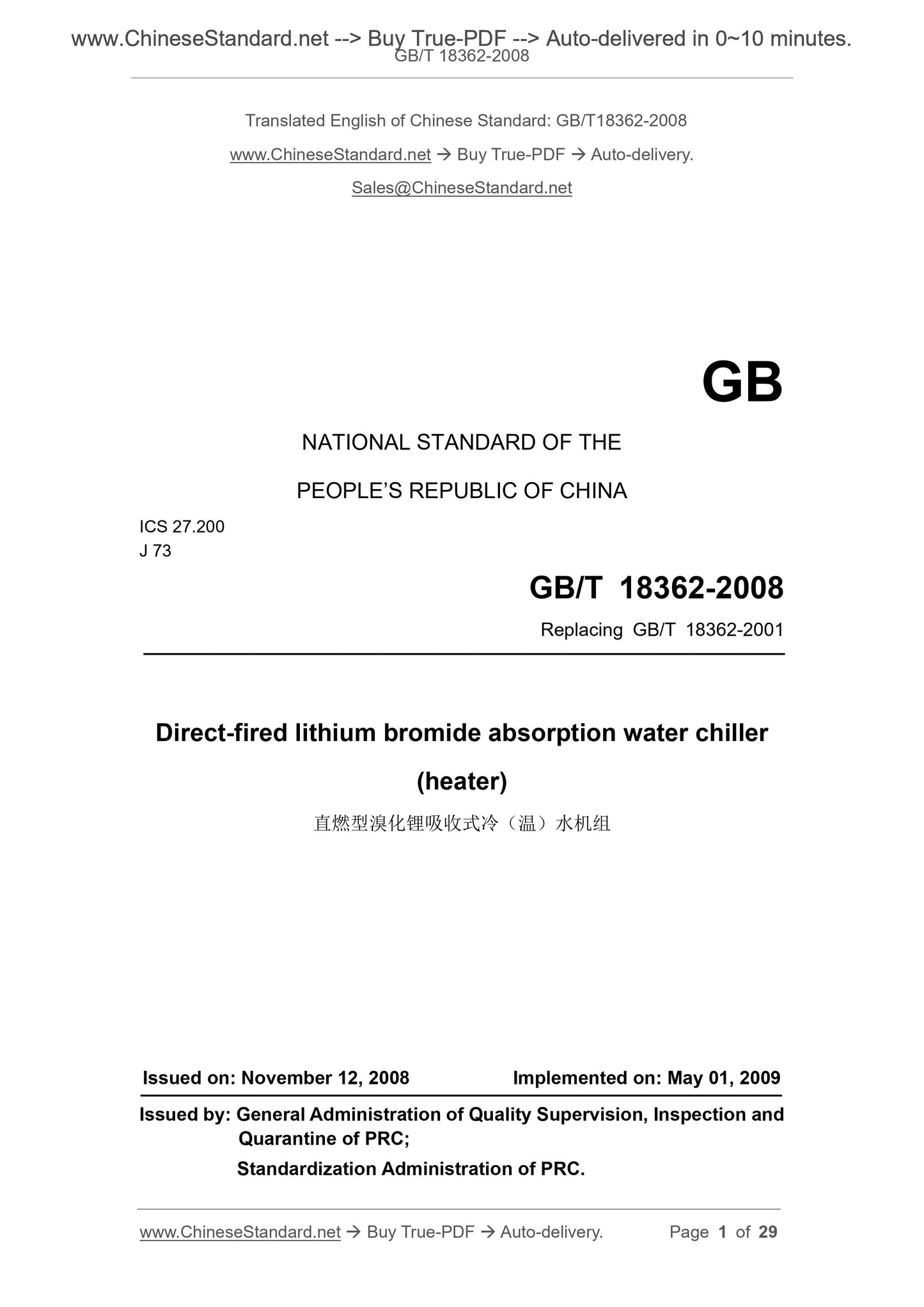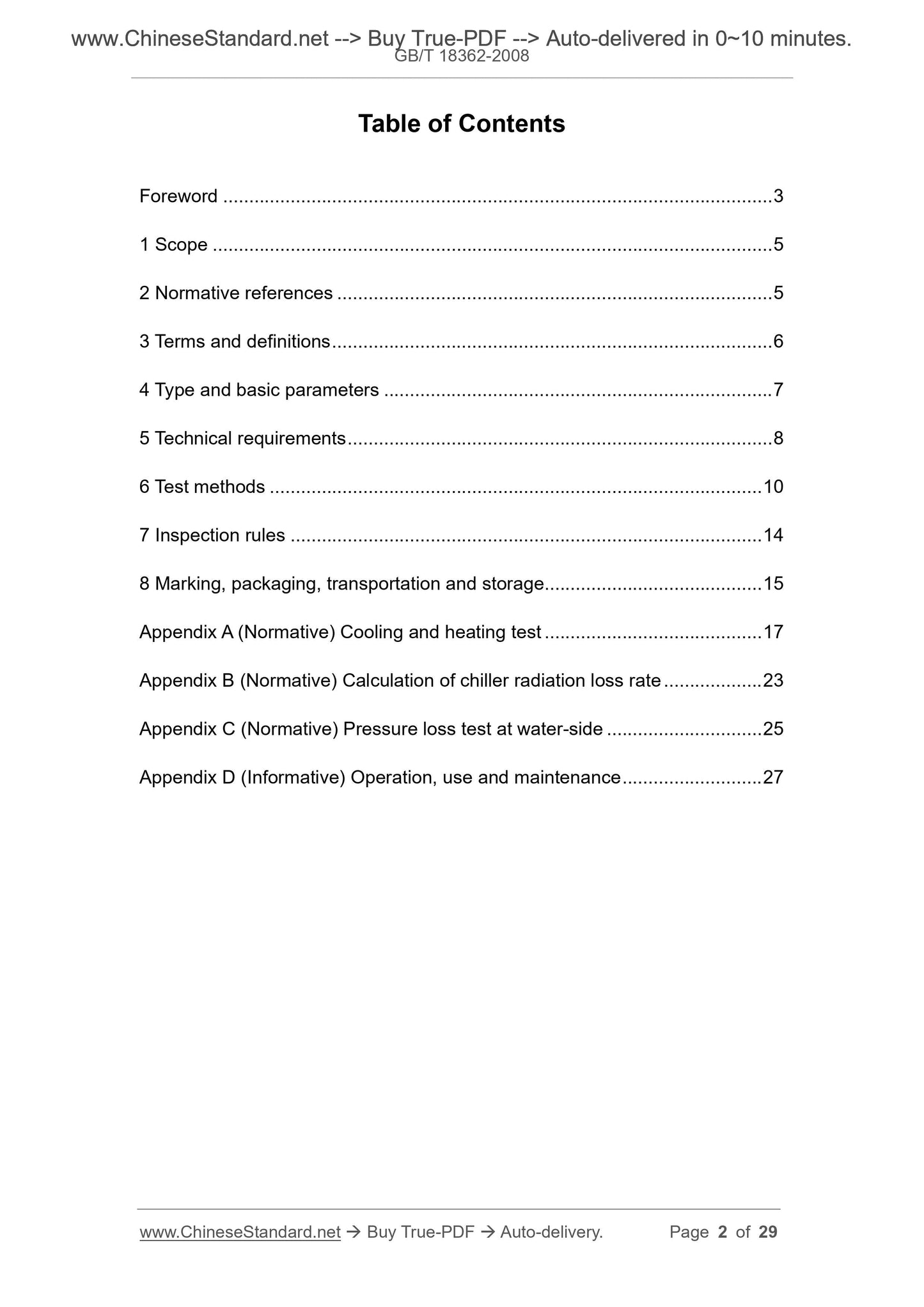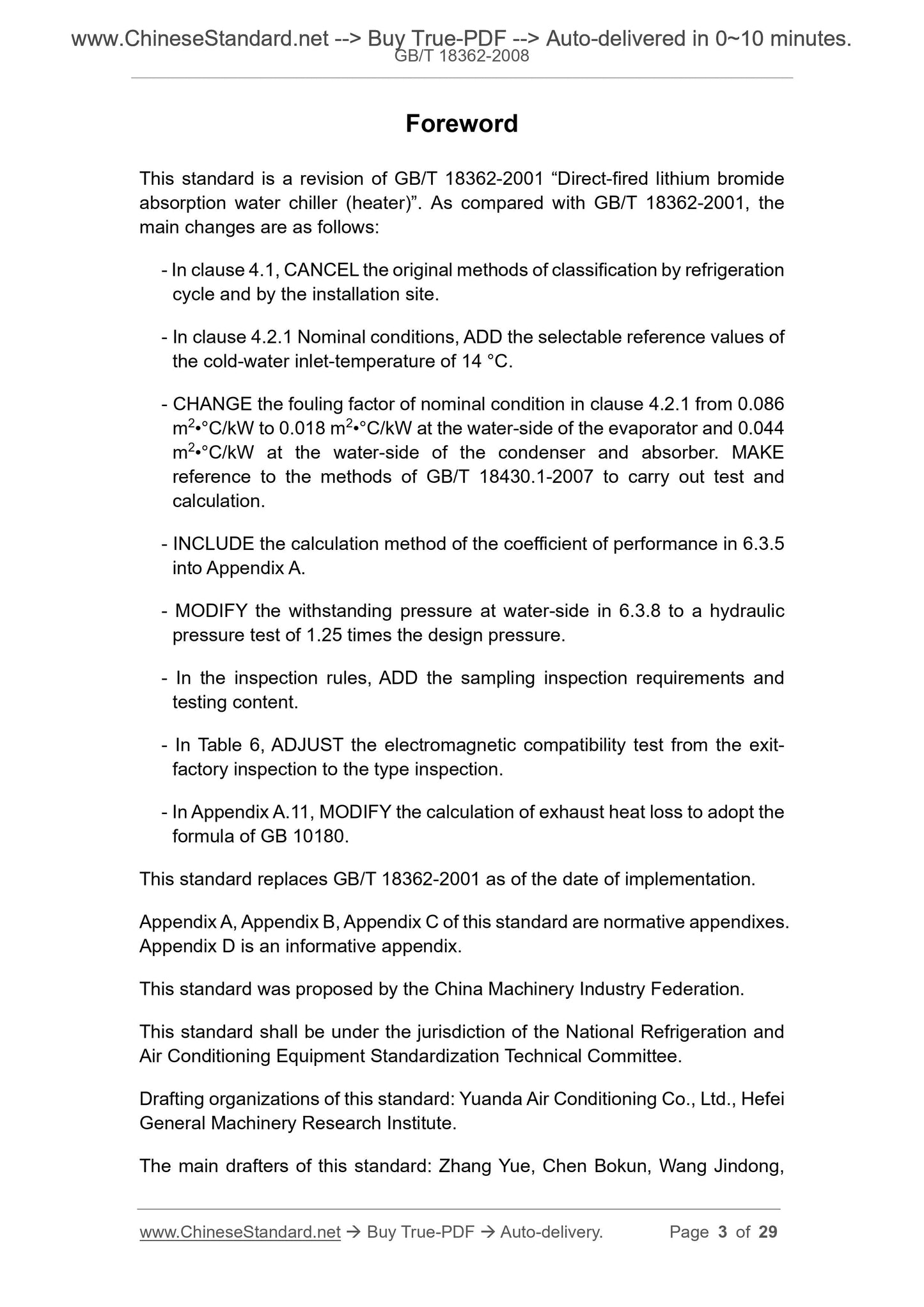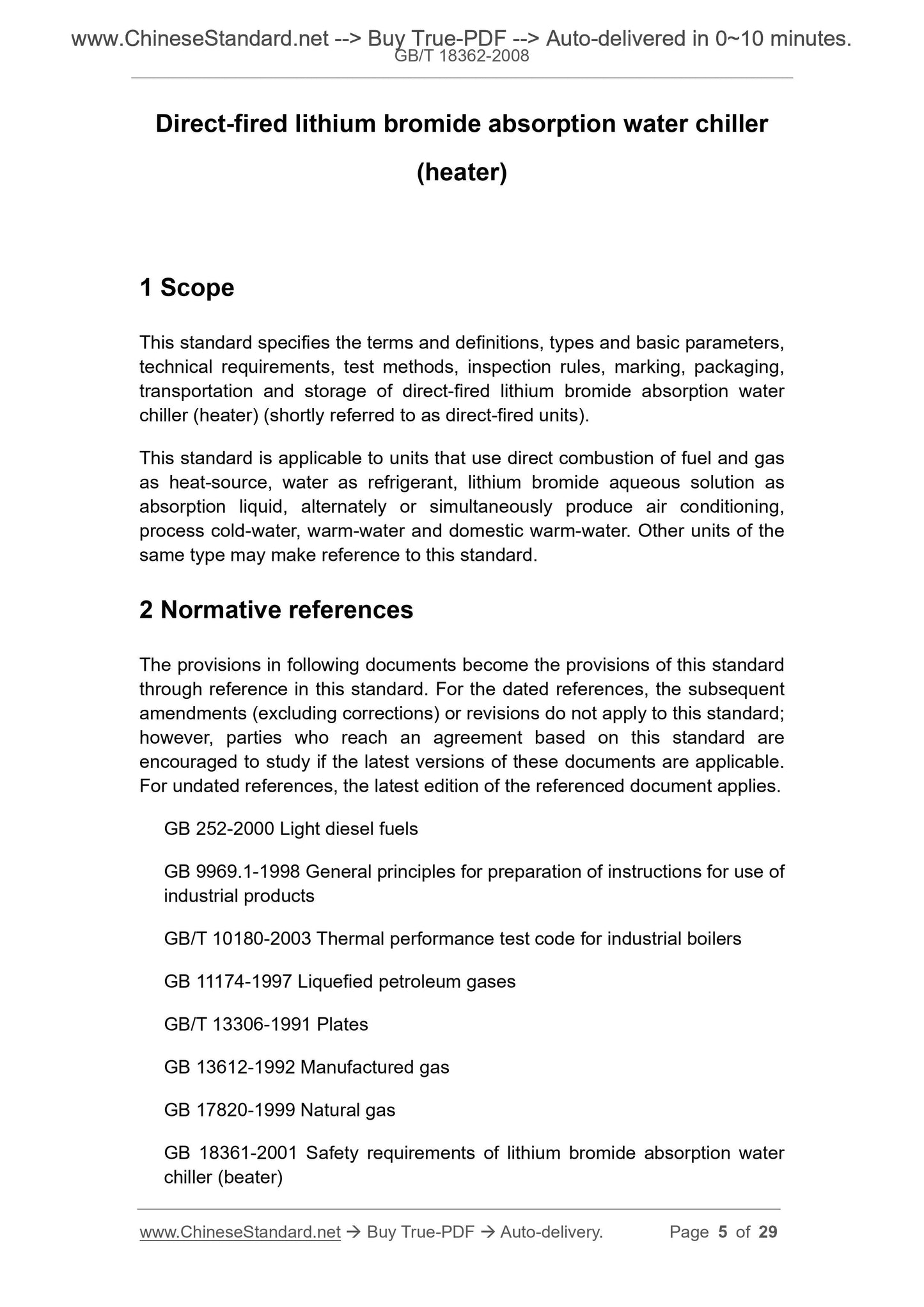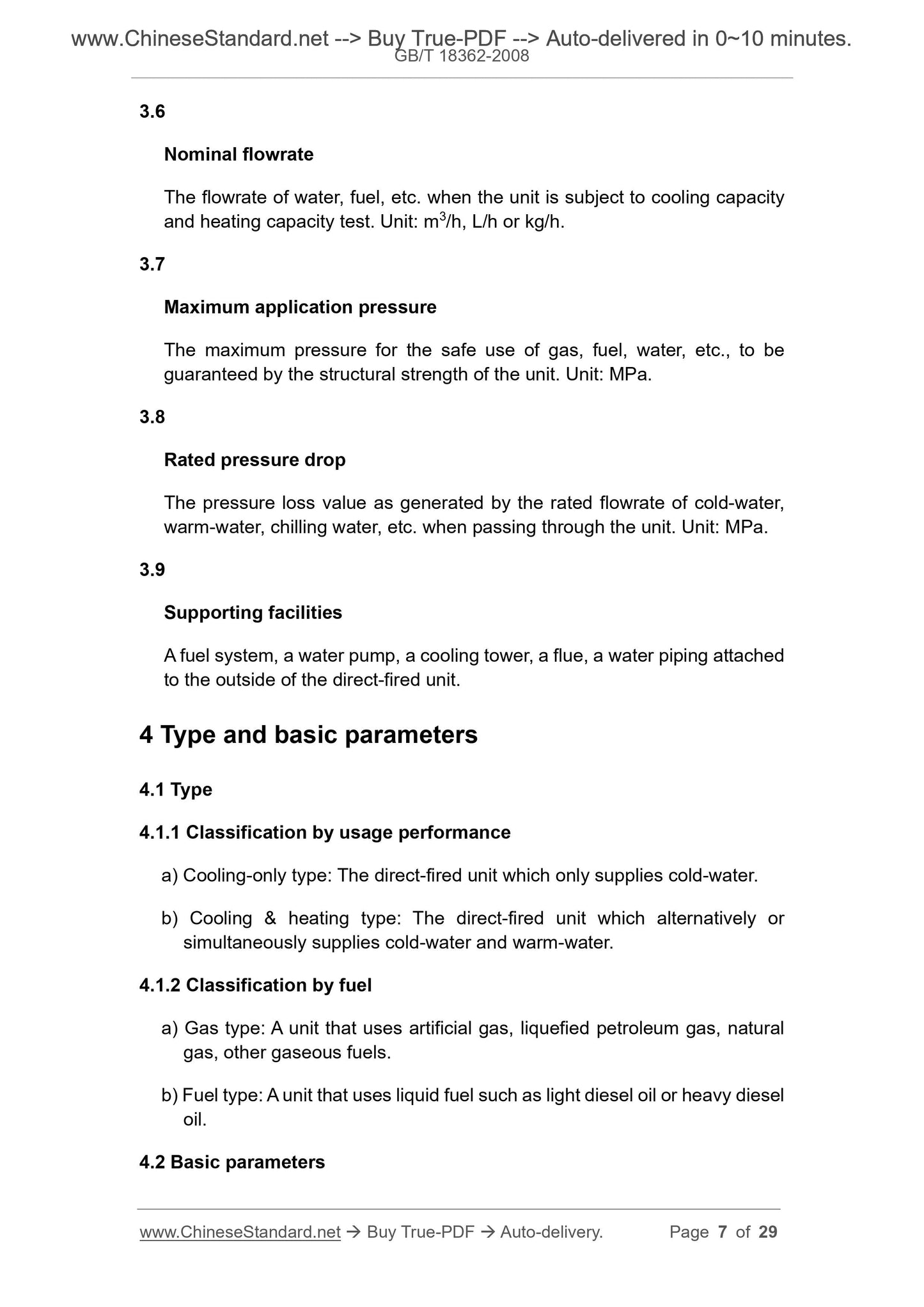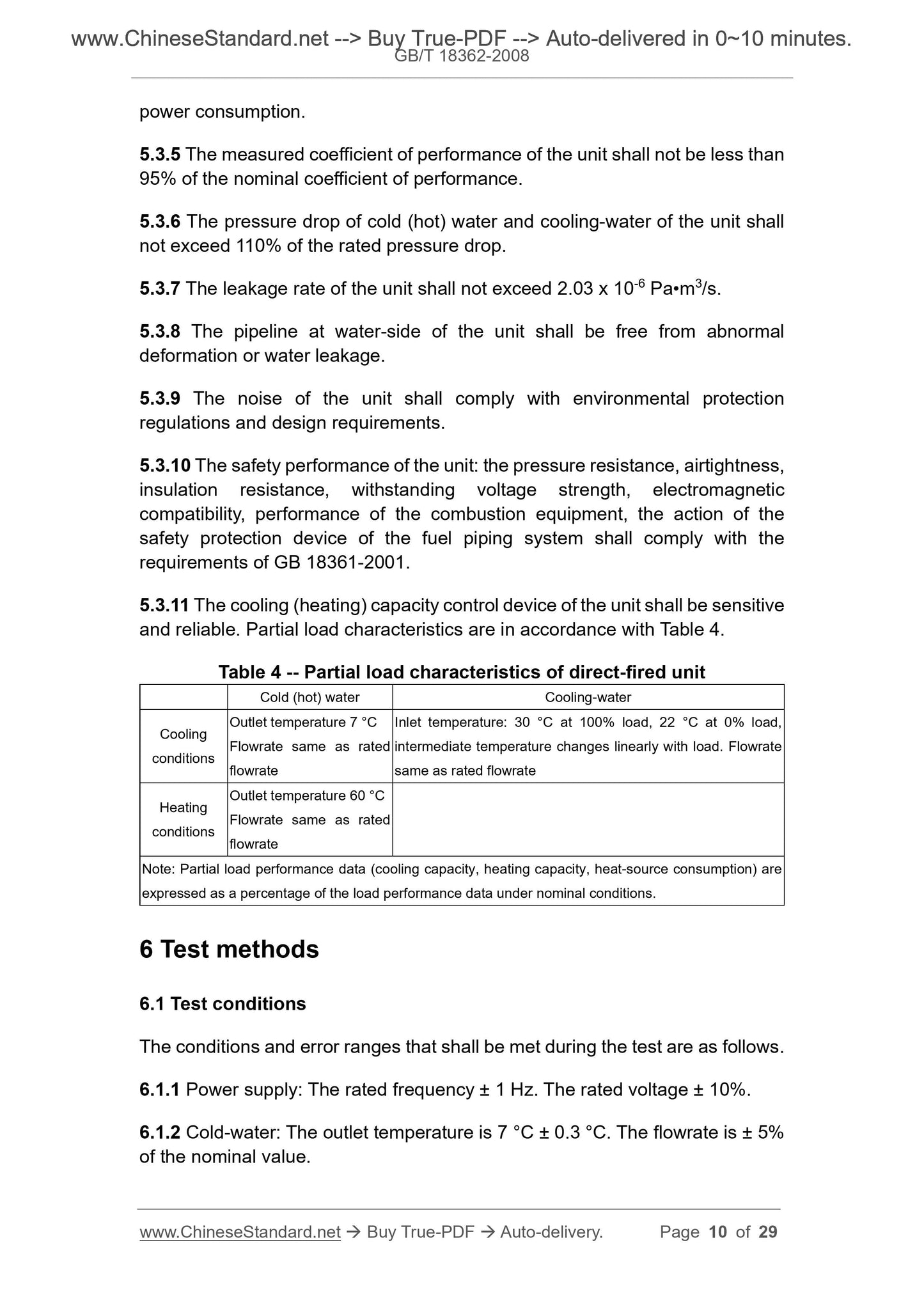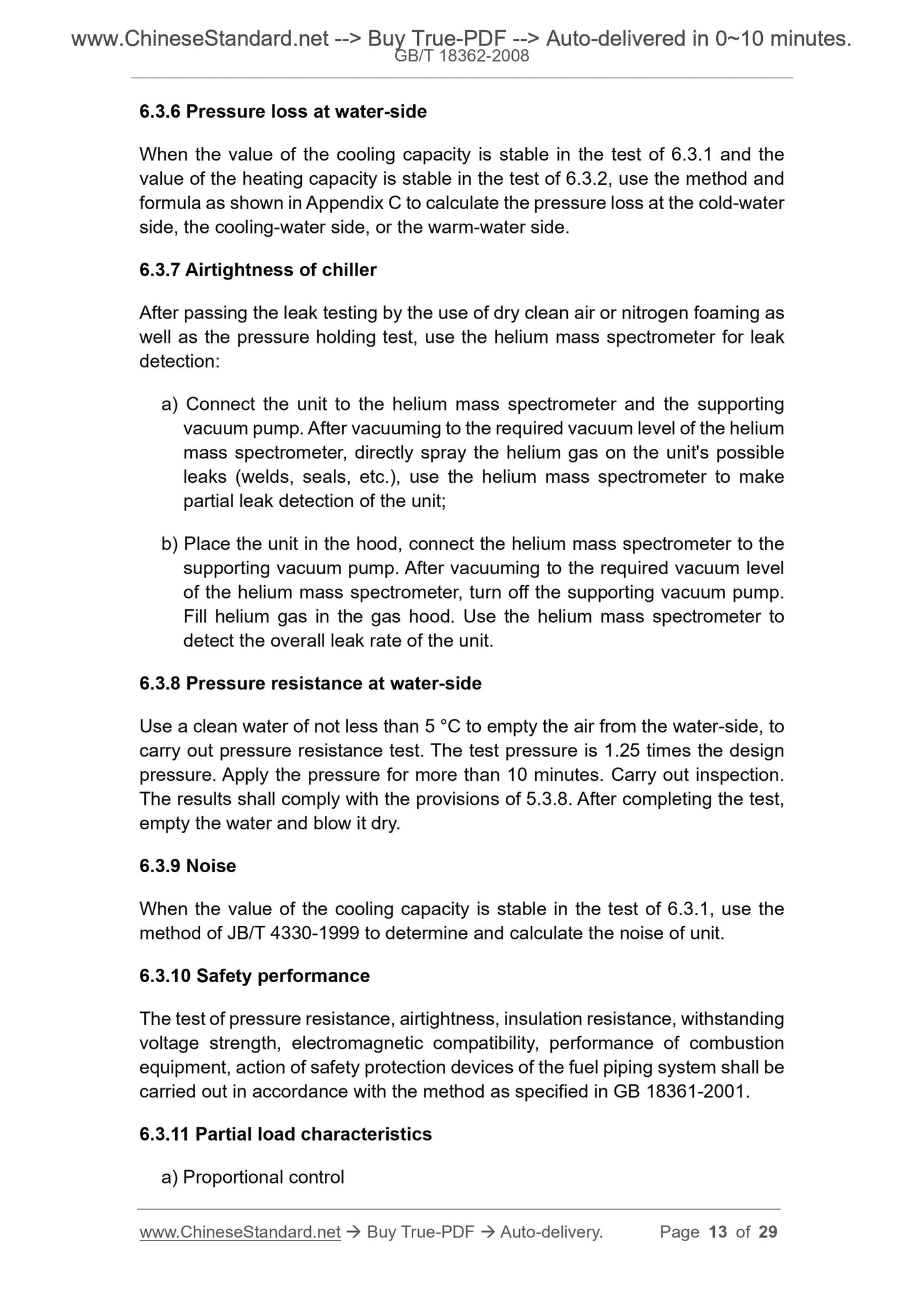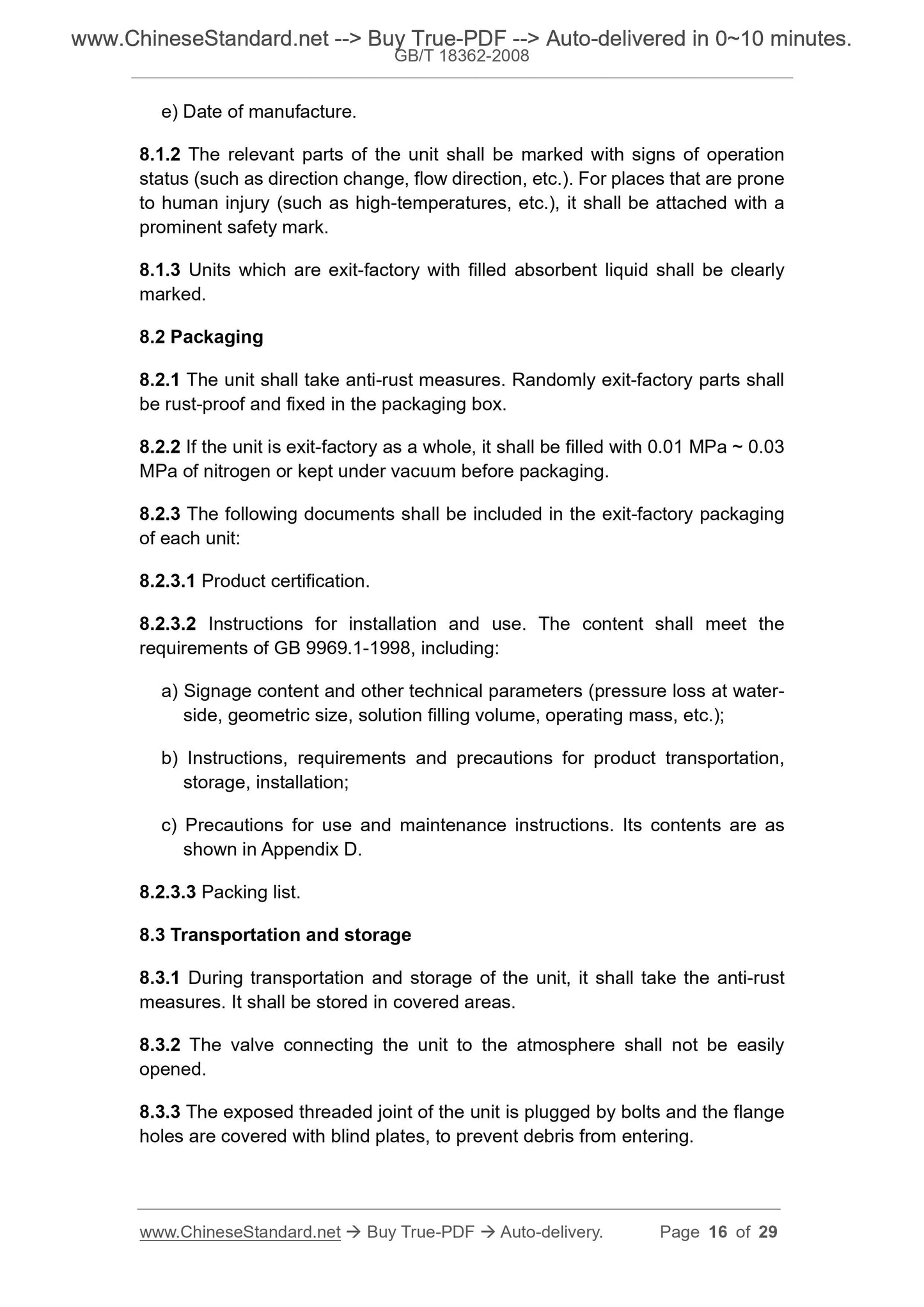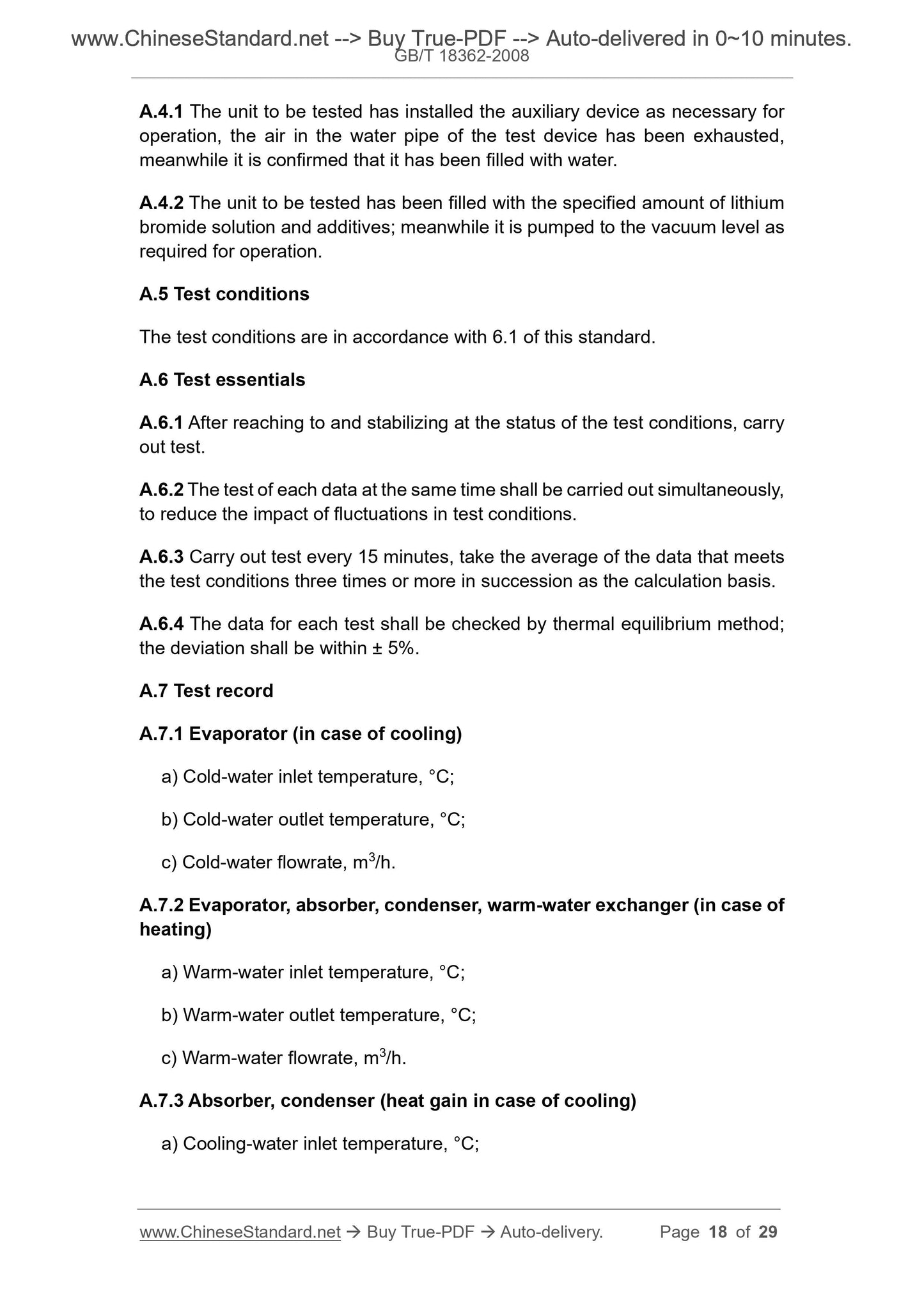1
/
of
10
www.ChineseStandard.us -- Field Test Asia Pte. Ltd.
GB/T 18362-2008 English PDF (GB/T18362-2008)
GB/T 18362-2008 English PDF (GB/T18362-2008)
Regular price
$150.00
Regular price
Sale price
$150.00
Unit price
/
per
Shipping calculated at checkout.
Couldn't load pickup availability
GB/T 18362-2008: Direct-fired lithium bromide absorption water chiller (heater)
Delivery: 9 seconds. Download (and Email) true-PDF + Invoice.Get Quotation: Click GB/T 18362-2008 (Self-service in 1-minute)
Newer / historical versions: GB/T 18362-2008
Preview True-PDF
Scope
This standard specifies the terms and definitions, types and basic parameters,technical requirements, test methods, inspection rules, marking, packaging,
transportation and storage of direct-fired lithium bromide absorption water
chiller (heater) (shortly referred to as direct-fired units).
This standard is applicable to units that use direct combustion of fuel and gas
as heat-source, water as refrigerant, lithium bromide aqueous solution as
absorption liquid, alternately or simultaneously produce air conditioning,
process cold-water, warm-water and domestic warm-water. Other units of the
same type may make reference to this standard.
Basic Data
| Standard ID | GB/T 18362-2008 (GB/T18362-2008) |
| Description (Translated English) | Direct-fired lithium bromide absorption water chiller (heater) |
| Sector / Industry | National Standard (Recommended) |
| Classification of Chinese Standard | J73 |
| Classification of International Standard | 27.200 |
| Word Count Estimation | 19,184 |
| Date of Issue | 2008-11-12 |
| Date of Implementation | 2009-05-01 |
| Older Standard (superseded by this standard) | GB/T 18362-2001 |
| Quoted Standard | GB/T 252-2000; GB 9969.1-1998; GB/T 10180-2003; GB 11174-1997; GB/T 13306-1991; GB 13612-1992; GB 17820-1999; GB 18361-2001; GB/T 18430.1-2007 |
| Regulation (derived from) | National Standard Approval Announcement 2008 No.19 (Total No.132) |
| Issuing agency(ies) | General Administration of Quality Supervision, Inspection and Quarantine of the People's Republic of China, Standardization Administration of the People's Republic of China |
| Summary | This standard specifies the direct-fired lithium bromide absorption chiller (warm) water unit (referred to as: direct burning) of the terms and definitions, Types and basic parameters, technical requirements, test methods, inspection rules, signs, packaging, transport and storage. This standard applies to the fuel, direct combustion gas as the heat source, with water as the refrigerant and lithium bromide solution as absorbent, alternately or simultaneously preparing air-conditioning, warm and hot water units, process cold. Other units may refer to the same type. |
Share
